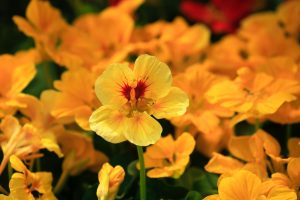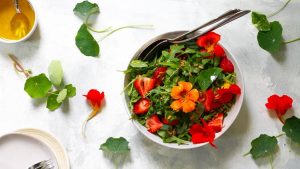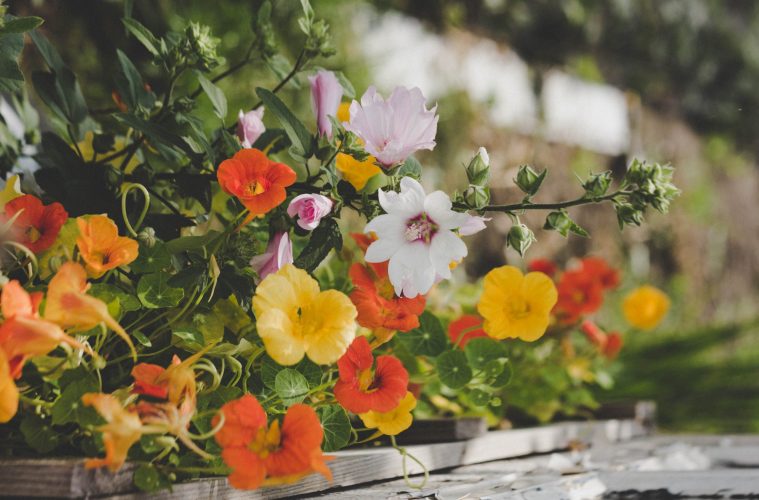With so many uses in the garden and in the kitchen, a vegetable garden without nasturtium is incomplete.
When starting a vegetable garden, the first plants that come to mind are often ones we find most often at the grocery stores – tomatoes, onions, lettuce, and more. But there is one essential edible garden plant you won’t always find in stores and is likely to become your new favourite – nasturtium.

Pexels
Nasturtiums (Tropaeolum majus) have a seemingly endless list of uses in the garden. Spreading quickly as a low-growing ground cover, the massive leaves fill up space, keep weeds away and retain moisture. Above these leaves emerge bright flowers in a range of fiery colours that add wonderful ornamental interest. Nasturtiums are perhaps most well known for their use as a trap crop, drawing pests like aphids away from your prized vegetable patch and taking one for the team.
Read more: Ways to use edible flowers
Their benefits do not stop there. These plants are also powerhouse ingredients on their own, ideal for those who like to experiment in the kitchen. The flavour in the leaves and flowers is similar to watercress (explaining why they share a common name with this genus), with a peppery kick that you wouldn’t expect from such delicate blooms.
Feeling fresh

Pexels
Most choose to add the fresh blooms to salads or desserts as a pretty garnish. At your next dinner party, make nasturtiums part of the hors d’oeuvres by stuffing the flowers with a herb and cream-cheese mix or using the leaves as wrappers similar to rice paper. They also make a flavourful pesto, combined with your favourite herbal ingredients and used as a dip or dressing. Even the seed pods are edible, great when pickled and often used as a substitute for capers. With some imagination, the options are unlimited.
Although nasturtium flowers are usually the first thing grabbed as a garnish, the leaves are equally as useful, especially in leafy salads. The peppery flavour pairs well with sweeter ingredients such as figs, topped with an acidic balsamic glaze.
A version of this article was originally published in the Garden&Home February 2023 printed magazine.
Feature image: Unsplash

